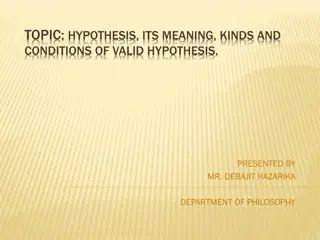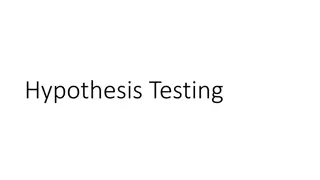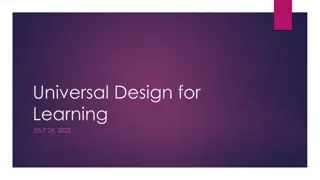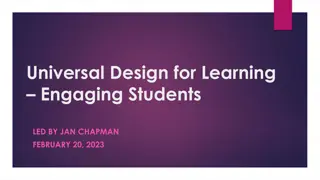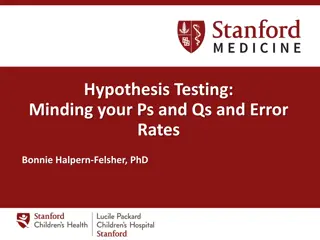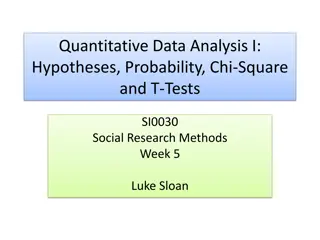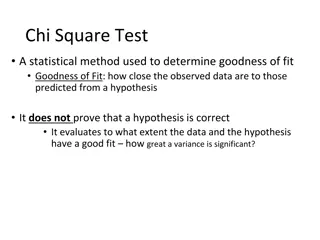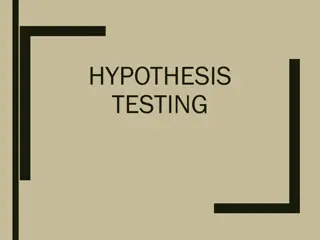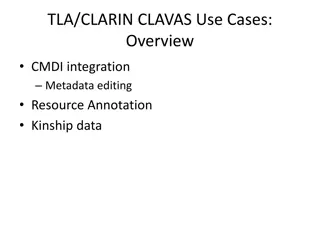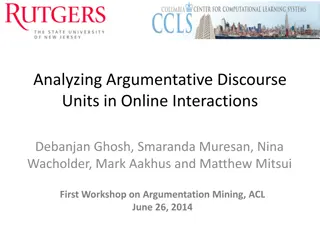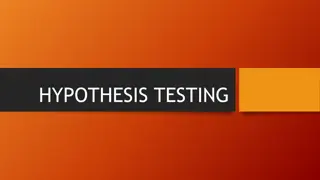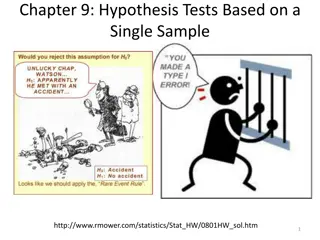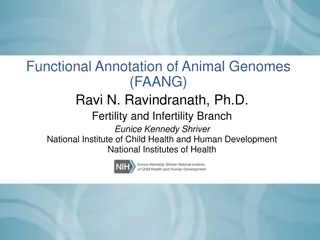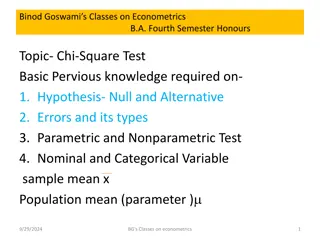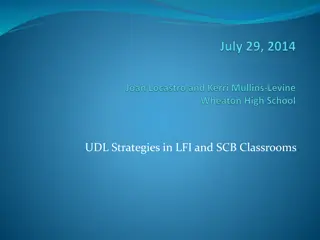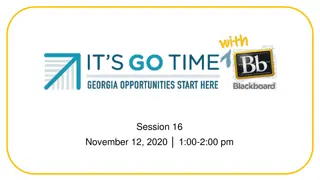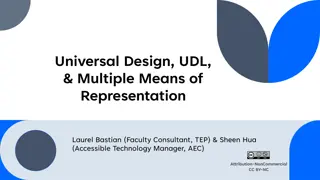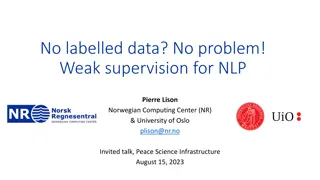Integrating UDL and Social Annotation Through Hypothesis Workshop
Learn how to incorporate Universal Design for Learning (UDL) principles with social annotation using Hypothesis Workshop. Discover the benefits of social annotation, ways to align it with UDL, practical assignment examples, and engage in interactive sessions. Join the workshop to enhance student engagement and comprehension through innovative teaching methods.
Download Presentation

Please find below an Image/Link to download the presentation.
The content on the website is provided AS IS for your information and personal use only. It may not be sold, licensed, or shared on other websites without obtaining consent from the author.If you encounter any issues during the download, it is possible that the publisher has removed the file from their server.
You are allowed to download the files provided on this website for personal or commercial use, subject to the condition that they are used lawfully. All files are the property of their respective owners.
The content on the website is provided AS IS for your information and personal use only. It may not be sold, licensed, or shared on other websites without obtaining consent from the author.
E N D
Presentation Transcript
Hypothesis multimedia features: Incorporating UDL into your course Hypothesis Workshop https://bit.ly/lpchypf23
Agenda 1. Discuss: What is social annotation? What is UDL? 2. Review how social annotation can help meet the principles of UDL 3. Assignment examples 4. Demo 5. Discussion/Q&A
Introductions Name, Discipline, Experience with Hypothesis Find us on Twitter @hypothes_is #socialannotation
Your Hypothesis Team Christie DeCarolis Customer Success Manager & Instructional Designer
Hypothesis in Teaching & Learning
What does it look like to annotate with Hypothesis?
Hypothesis makes reading Active Visible Social I want students to learn the profits and pleasures of careful, engaged reading... Hypothesis finally delivers on the promise of digital annotation. "Their annotations give me a window to their thoughts and understandings that I couldn't access otherwise... I wouldn t get this depth of interaction in a threaded discussion. "Hypothesis is my literary Facebook. When I m reading I sometimes wonder, does anyone actually understand this? Am I crazy? With this brilliant tool I know I m not alone. Lawrence Hanley, Professor, Department of English, San Francisco State University Linda Parsons, Associate Professor, The Ohio State University Shannon Griffiths, Student, Plymouth State University
Hypothesis in the Classroom
Start by annotating the syllabus. Set expectations. Provide space for questions. Practice annotating.
Annotate lectures or additional course videos. Connect video to text. Provide another means of representation. Add interaction to video.
Open the reading for a seminar-style discussion online. Create discussion threads. Anchor the conversation in text.
Have students annotate your course documents. Provide space for questions. Clarify course concepts.
Hypothesis Starter Assignments Assignment instructions that are ready to use or adapt in your courses Annotation starter assignments Some examples: General annotation assignment YouTube video annotation starter assignment Annotation assignment for STEM texts
Hypothesis offers An alternative way to engage A method of community-building An explicit time for students to practice metacognition A formative assessment strategy An opportunity for students to to see themselves as knowledge creators Offer multiple types of opportunities to engage in the course. What will motivate and engage my students? Goals: Create value and authenticity Vary demands to optimize challenge Foster community Develop self-assessment and reflection
Social annotation to support neurodivergent learners Offers instructors a method for incorporating UDL into their courses Hypothesis features allow students to choose when and how to engage in a way that best works for them Examples of controlling distractions: Hide/reveal highlights with the eye icon: Choose when to load new annotations:
Hypothesis offers Multimedia options in both what you annotate and how you annotate Clarification of vocabulary and concepts anchored within the text A way to guide the students through readings, highlighting key concepts and patterns Offer different types of course materials for your students to consume. How will my students best learn a concept or topic? Goals: Clarify jargon and syntax Offer alternatives to text (audio, images, video) Offer alternatives to visual information (text, audio) Highlight patterns
Bring in multiple means of representation with our YouTube and JSTOR integrations YouTube instructions JSTOR instructions
and by annotating with images and video Help docs on adding links/images and adding videos to annotations
Get creative with multimedia annotations Use the emoji keyboard to add emoji to annotations ? Ask students to create memes and add them to annotations
Hypothesis offers A way to scaffold learning and emphasize process over product A strategy for students to manage information in preparation for summative assessments A safe space for students to make mistakes in learning Offer varying types of assignments through which learners will be assessed. How can my students best express what they know? Goals: Provide scaffolding to support performance Use multiple tools for construction & composition Facilitate managing information & resources
Hypothesis in Canvas
Make your course documents annotatable Students signed in automatically Private groups created for courses
Getting started with Hypothesis social annotation
What can you annotate? PDFs Open textbooks & OER Webpages & online articles YouTube video transcripts JSTOR & VS articles/e-texts
What can you put in an annotation? Lorem ipsum dolor sit amet, consectetur adipiscing elit, sed do eiusmod tempor incididunt ut labore et dolore magna aliqua. Text Images https:// Links Videos YouTube Vimeo #thesis Tags Equations Emojis Help docs on adding links/images and adding videos to annotations
PDFs must have a selectable text layer If you can t select text, copy, and paste, you can t annotate (more on PDF text layers)
Hypothesis in Canvas Resources How to set up Hypothesis readings through Canvas Modules How to set up Hypothesis readings through Canvas Assignments How to annotate YouTube videos with Hypothesis in Canvas How to grade Hypothesis annotations in Canvas Using Group Sets with Hypothesis in Canvas A student guide to Hypothesis in Canvas More here.
Hypothesis Teaching and Learning Resources General Hypothesis resources useful to teacher and students: Annotation tips for students An Illustrated Guide to Annotation Types Adding Images, Videos, and Links to your Annotations Examples of classroom use More here.
Hypothesis Partnership Program
Pedagogical support Custom training and instructional design 1:1 instructional design consultations Webinars More partner resources Check out our faculty panel discussions, Liquid Margins, for inspiration Find assignment ideas in Resources for Social Annotation Join the Hypothesis Educator Forum Technical support from support@hypothes.is
Hypothesis Academy Earn a Hypothesis Certified Educator Credential Hypothesis Academy are two-week asynchronous courses designed to teach you not only how to use the Hypothesis tool, but how to design social annotation assignments to best support your students learning. Social Annotation 101 Social Annotation in the Age of AI Learn more and register for the next cohort
Register for our Partner Workshops Using multimedia and tags in annotation Grading and feedback for social annotation Activating Annotation in your LMS Annotate your syllabus Using Hypothesis with small groups Creative ways to use social annotation Show-and-tell participatory workshop Annotating in STEM subjects
Hypothesis Customer Success Team cdecarolis@hypothes.is




